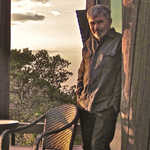

Post-war Paranoia
February 4th, 2014, 12pm
It was 6°C with scattered clouds. There was moderate breeze.
I bought this Ordnance Survey map dating from the mid-1950s off ebay the other day. It covers the area where I live and the surrounding villages and countryside, including West Malling (pronounced so as to rhyme with calling or falling) and King Hill, the location, as you can see, of the famous World War II airfield.
The airfield started life in 1930 as a private airfield, then became the rather grandly-named ‘Maidstone Airport’ (Maidstone being just 5 miles to the east) 2 years later, with a concrete and asphalt runway being built when the RAF took over in 1940 (along with hangars, a control tower and other buildings, including a series of H-blocks providing sleeping accommodation for the airmen). Intense German bombing meant that West Malling couldn’t be used during the Battle of Britain, but it later became a very important base for Bristol Beaufighters and Spitfires, the latter involved in the attempts to stop the infamous V1 ‘Doodlbug’ flying bombs from reaching London.
The RAF finally left in the early 1960s and it became a base for several US Navy squadrons until 1967. In 1965 the Air Cadet’s Volunteer Gliding School moved to West Malling, with cable-launched Vanguard TX1 gliders, finally leaving in 1992.
My first visit to the airfield was in the late 1970s when I was an RAF cadet while at school. I went up in one of the cable-launched gliders, but the cable snapped as we were rising into the air, so it was a very short (and rather terrifying) experience, which was enough to make me decide that gliding wasn’t for me (at least not in those gliders!!!).
I found myself back at West Malling after leaving university, based in one of the old H-blocks, from 1987 to 1992, when I was an Archaeological Conservator with English Heritage (working within the Kent County Museum Service). I have discovered since that the group of 6 H-blocks “constitute the best preserved Art Deco influenced barracks in the country”, according to the official description in the National Monuments Record.
Now, sadly, very little remains to suggest there was an airfield at King Hill. It is now a sprawling estate of houses, retail and industrial units, a golf course, and local government offices.
Now I should ask an important question - Did you manage to find the air station in the photo of the map?
If you did, you may need to get out for some fresh air, because it’s not marked on the map at all. There is no trace of it whatsoever! And yet it was still an active RAF base at the time this map was produced.
I believe that during the 1950s the official policy in the UK was not to show military bases on maps, for reasons of national security. Hence the complete absence of RAF West Malling.
Some time in the next few days I hope to be able to add here a map showing the air station, just to prove that this is not all a figment of my imagination!
As promised, here is a map from the 1960s showing the airstation:
And here is an attempt at an overlay image, although the alignment is very poor because my photograph of the 1950s map is not great:


